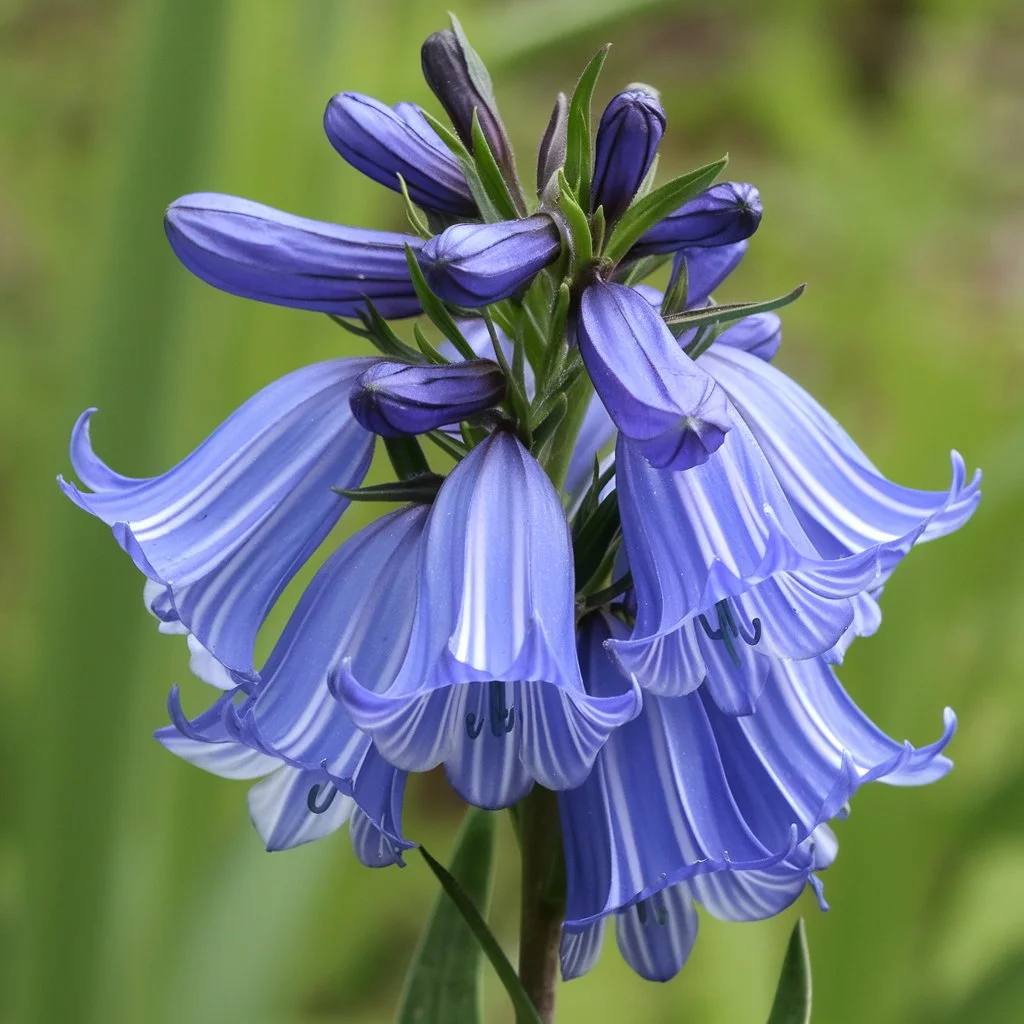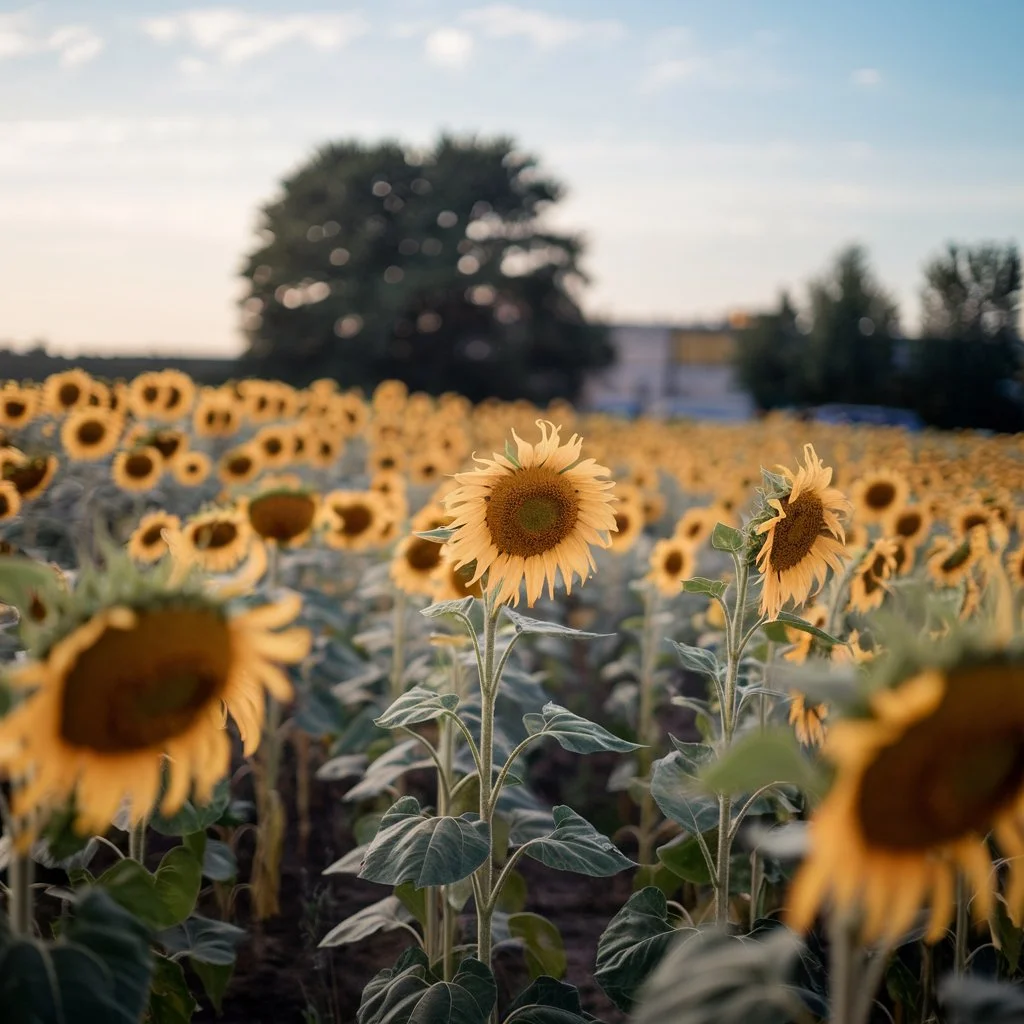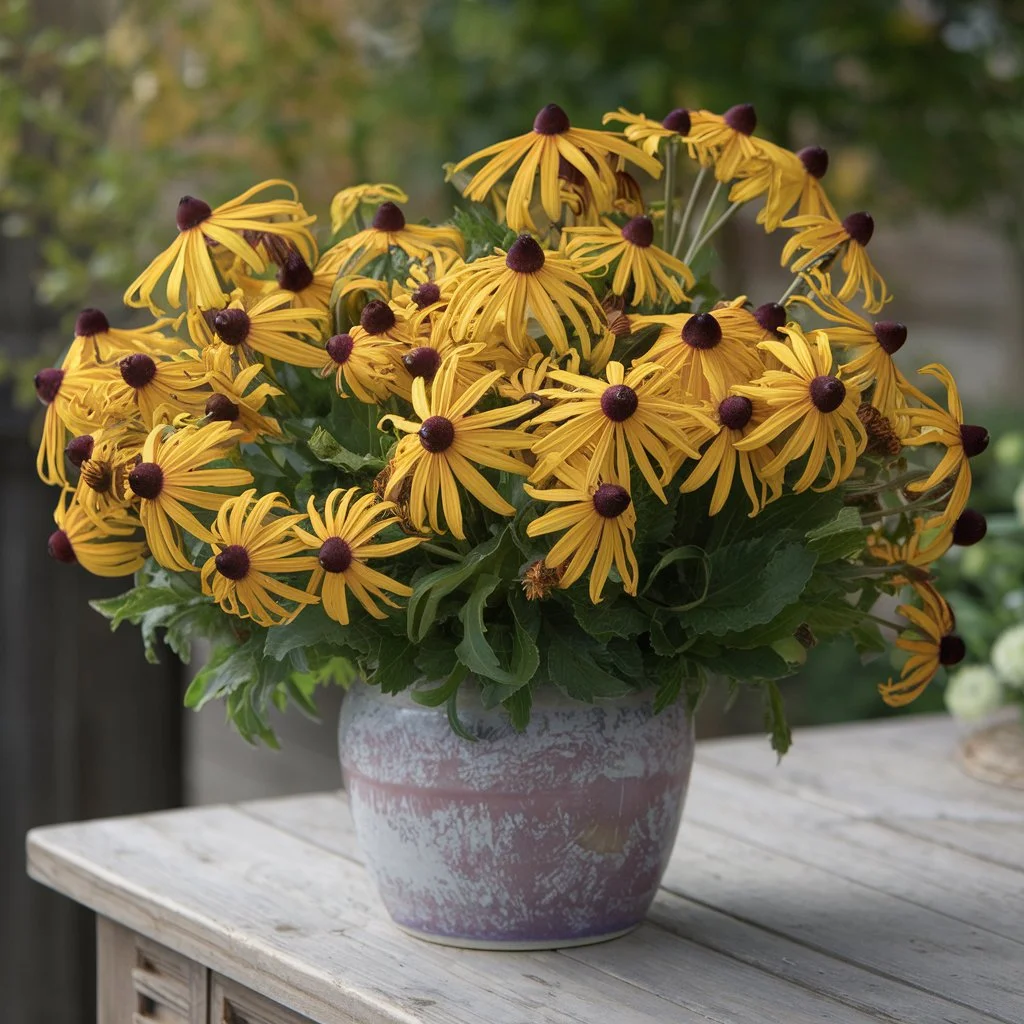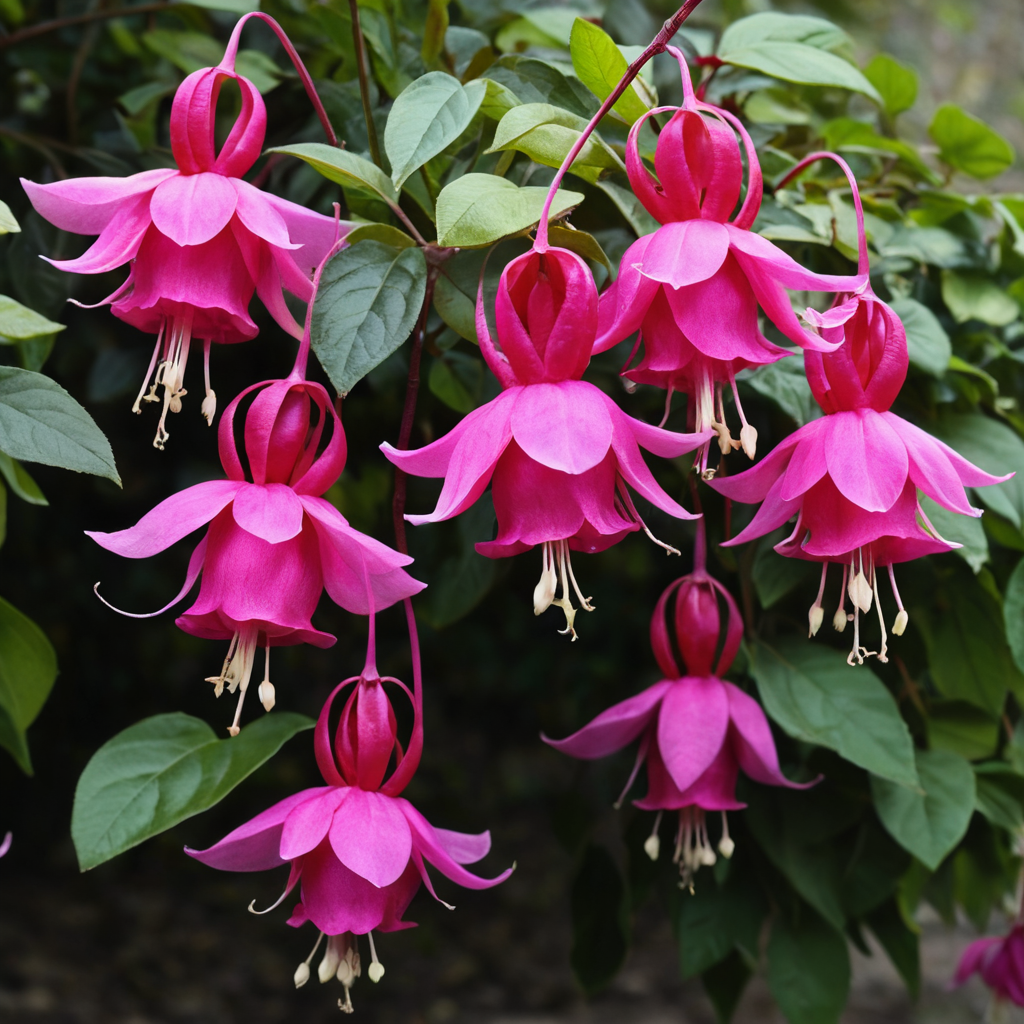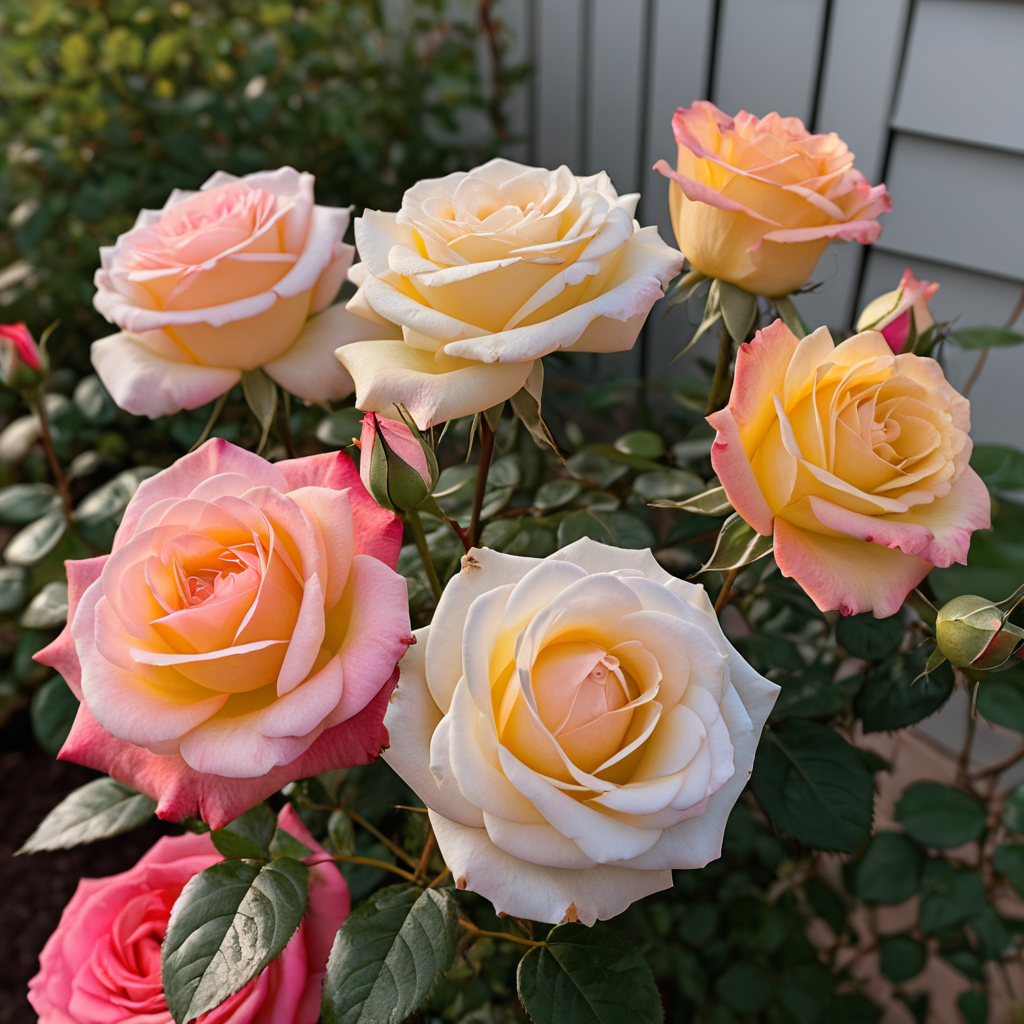Step into the enchanting realm of Campanula, or more commonly known, the engaging bellflower! Seeking to infuse vibrancy, sophistication, and a unique touch to your garden? You’re at the correct spot. These bell-shaped wonders are not only visually appealing—they’re also easy to care and adaptable, suiting garden lovers of all skills. However, as with any standout garden plant, they hold a few quiet insights about nurturing and development.
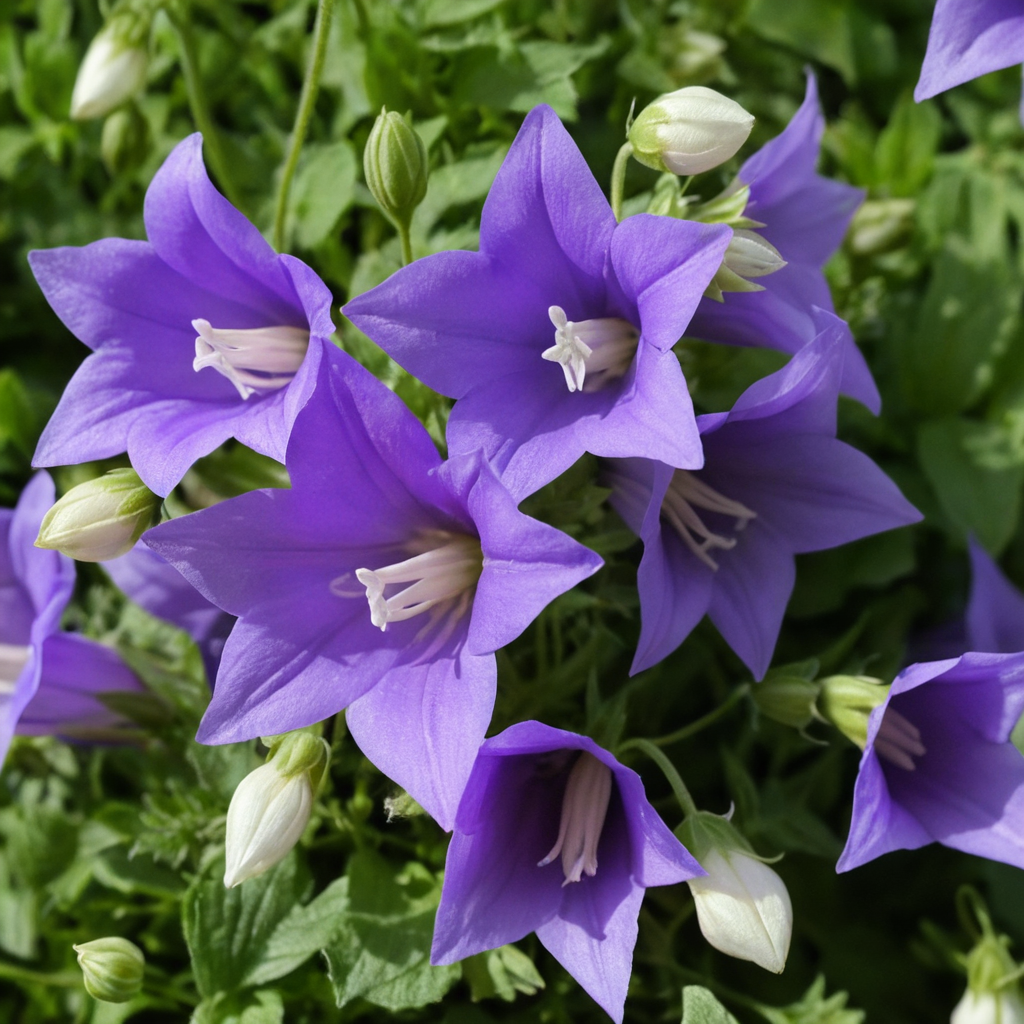
Stick with us and we’ll take you through everything you need to know to help your Campanula thrive. From ideal growing conditions to propagation tips, and how to deal with those pesky minor issues, we’ve got all the information you’ll need to make your clock flowers bloom like never before You’re ready about growing the garden of your dreams? Let’s get involved!
To grow bellflower plants, start by choosing a location with good water and soil and full to partial sunlight. Water regularly, but avoid over-watering, as bellflowers prefer relatively dry conditions between waterings. Trim dead flowers and apply minimal fertilizer to encourage healthy, vibrant flower growth.
Introduction to the Campanula Bellflower
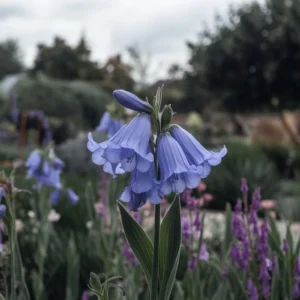
Welcome to the world of campanula bellflower—where beauty meets delicate care! This magnificent plant, commonly known as bellflower, is known for its delicate, bell-shaped flowers and its ability to grow well in gardens There are over 500 species in the genus Campanula, providing you with sizes, colors and growth habits to suit any gardening needs . Whether you want great floor covering, vertical garden details, or pot fillers, Campanulas offers something for everyone.
This beautiful plant is not just a pretty face; They are incredibly adaptable and easy to care for, making them perfect for beginning and experienced gardeners alike. Get ready to discover why these clock flowers are an absolute must in your garden!
Overview of the Campanula Genus and Its Varieties
The genus Campanula is large, with more than 500 species. Native to parts of Europe, Asia and North America, Campanula grow in a variety of habitats, from rocky alpine meadows to shady forest edges and their size, shape and flowering seasons indicate almost no Campanula for each garden situation. Some are compact floor covers, while others stand tall and proud, creating a charmingly vertical appeal.
Here are a few popular varieties that have found their place in gardens:
- Campanula carpatica : A small, low-growing variety, this variety is perfect for adding delicate flowers to rock gardens, borders, or pots It has attractive bell-shaped flowers in shades of blue, red and white, and characteristic of compact growth, which is it demure in its appearance , an ideal choice for those looking for a floor-hugging alternative and
- Campanula persicifolia: Also known as the “peach-leaved bellflower,” this species grows tall, reaches 2 to 3 feet in height, and displays large, impressive flowers Its spiky flowers and large, impressive flowers are a factor it is a wonderful choice for height along with visual interest to your garden They are. These flowers bloom profusely from early to mid-spring, providing beauty for weeks.
- Campanula glomerata : This woody flowering shrub produces dense and beautiful clusters of bell-shaped flowers in a variety of colors such as blue, purple and white. Ideal for filling in flower beds or as multi-planters, its bushy growth habit provides great cover and adds a lovely, lush look to garden design The clusters of flowers look beautiful on the plant of the bright green leaves.
Campanula trees come in many shapes and sizes, and their adaptability makes them suitable for a wide range of gardens—from wildflower meadows to landscaped landscapes
Characteristics of the Campanula Bellflower
When you think of Campanula bellflowers, think of the delicate, graceful flowers that hang like little bells on long, sturdy stems. These flowers—usually lavender, blue, white, or purple—can bloom in late spring to early summer, producing a splash of color that lasts for weeks but doesn’t flower is the only thing that makes campanulas so special—let’s dive deeper into their defining characteristics:
- Size and shape: Campanula vary in size, with some varieties growing as compact ground covers and others growing up to 3 feet or more in height. The shape of the plant and the flowering stem can give a variety of looks in your garden, whether you prefer bold flowers or plants with long notes
- Flowers: The signature bell-shaped flowers bloom in a range of soft colors, from cool blues and yellows to crisp whites and light pinks, with each flower hanging elegantly and it softens, making it soft and flowing in the garden. They are slightly cupped or frosted, giving them a beautiful and interesting shape.
- Leaves: The leaves of Campanula bellflower are usually broad, rounded, or elliptic, and almost soft, velvety. These leaves keep the flowers green and remain attractive even when the flowers are in full bloom.
- Hardness & Flexibility: One of the best features of the campanula is its hardness. These plants are generally frost hardy and will grow in growing conditions from full sun to partial shade. Once established, they require little maintenance and can withstand environmental stresses, making them ideal for low-maintenance gardens
The Appeal of Campanula in Gardens and Landscapes
Campanula trees are renowned as one of the most versatile and beautiful plants for all types of gardens. Their beautiful flowers, ease of care and adaptability make them a valuable addition to any landscape. Here is why campanula bellflowers are admired by gardeners around the world:
- Low maintenance: Once installed, campanulas are relatively easy to maintain. They don’t need constant attention—just an occasional watering, some pruning, and some charcoal to keep them happy. This makes them perfect for busy gardeners or those who like low-maintenance plants that still look amazing.
- Attracts pollinators: The attractive flowers of Campanulas are like magnets for pollinators like butterflies, bees and hummingbirds. This makes it an excellent location for gardeners looking to support local wildlife and create an environmentally friendly garden.
- Garden Design and Flexibility: Campanulas serve as a vital element in designing be it a lively flower bed, a tranquil cottage garden, or a rich border. Their varying heights and growth patterns allow them to fill empty spaces, provide vertical appeal, or sprawl as groundcovers. They thrive in both sun-drenched and shadowed spots. This makes them suitable for a variety of garden styles and conditions.
- Long-lasting beauty: Campanula flowers for weeks, providing lasting color in your garden. Flowers stand up well even in the heat of summer, and permanently dead flowers re-sprout. This means you get lots of beautiful flowers without having to replant each year.
With their delicate, stunning flowers and versatility, campanula are a favorite for gardens around the world. Whether you’re a novice gardener or an avid plant enthusiast, these bellflowers will become an instant favorite in your garden—and for good reason!
Essential Care Tips for Campanula Bellflowers
Now that you’ve been hit with Campanula bellflowers, it’s time to learn how to keep them healthy and beautiful. These beauties are low-maintenance, but like all stars, they have a few specific needs to help them shine their brightest. From soil to sunlight, water to food, dig into essential care tips to keep your clock flowers blooming throughout the season.
Soil Requirements for Campanula Bellflowers
Campanula is sensitive when it comes to soil, but they prefer well-drained, slightly less alkaline soil. Think of it as their personal comfort zone—they’ll do best when their roots aren’t sitting in waterlogged soil, which can lead to root rot Here’s what you need to know:
- Good drainage: Make sure the soil doesn’t hold too much water. If your soil is heavy and clay-like, you can improve drainage by adding organic matter such as compost or sand.
- Slightly alkaline to neutral pH: Campanula grows in soil with a pH of 6.0 to 7.5. If you don’t know the pH of your soil, it’s a good idea to test to see if it’s in this range.
- More organic matter: Campanula appreciate nutrient-rich soil, so adding compost can help provide the necessary nutrients for vigorous growth and beautiful flowering
Watering Campanula Bellflowers
Watering Campanulas takes some finesse. They aren’t fans of being too wet or too dry. It’s all about finding the sweet spot. Here are the steps to make sure your bellflowers get just the right amount of water:
- Water regularly but not excessively: Campanula prefer a moderate amount of water. Water when the top inch of soil is dry to the touch, but avoid letting the plant sit in water.
- Deep watering: Make sure the water is deep enough to get to the roots, especially in dry season. Shallow water can lead to weak roots and poor plant health.
- Proper watering pots: When growing campanulas in pots, make sure your containers have drainage holes. Water at the bottom of the pot is a big no-no.
Light and Temperature Preferences
Campanula are very sensitive when it comes to light, but they do have some preferences to help them thrive. Here’s how to create the perfect environment for your bellflowers:
- Sunlight: Most campanula grow in full sun to partial shade. A sunny location will encourage good flowering, but if you’re in a hot climate, the plants won’t wilt to provide some daytime shade.
- Temperature: Campanula is a hardy plant and can tolerate a wide range of temperatures. They grow well in warm climates with mild summers and cool winters, but will do well in slightly warmer conditions as long as temperatures are not too high
- Cold hardiness: Some varieties, such as Campanula carpatica, are cold tolerant and will survive frost, while others are better suited to warmer climates Be sure to check the specific varieties you are growing for your preferences whether it is hot.
Fertilizing and Feeding Campanula
Campanulas aren’t heavy feeders, but a little boost now and then will help them flower beautifully. Over feeding can actually be harmful to your plants, so feeding them properly is key. Here’s how to feed your Campanula without overdoing it:
- Feed less: Only a balanced, gentle fertilizer applied in early spring is all your campanula really needs. If you prefer organic products, well-rotted compost or garbage will also work wonders.
- Avoid overfertilization: Many fertilizers, especially high-nitrogen fertilizers, can produce lush foliage but few flowers. Aim for balanced or slightly excess phosphorus to promote healthy flowering.
- Feed during the growing season: Apply a light fertilization in early spring when new growth begins, then again after the first rotation in early spring and avoid feeding in the fall, as it should as the plant prepares for dormancy.
With the right soil, water, sunlight and a little food, your campanula bellflowers will reward you with beautiful blooms throughout the season. Keep these tips in mind, and you’re on your way to a garden full of beautiful and healthy bellflowers!
How to Propagate Campanula Bellflowers
If you’re in love with your Campanula bellflower and want to spread the fun, growing is a great way to expand your garden. Whether you start from Campanula bellflower seeds or divide your existing plants, propagation is a fun and easy way to grow more of this amazing flower Below we will show you step by step instructions about both ways about, ensuring that your Campanula bellflower care plan is as rewarding as the flowers
Step-by-Step Guide to Seed Propagation
Planting Campanula bellflower seeds isn’t tough and can yield lovely outcomes if executed right. Be it in planters or directly in your yard, the method of spreading these seeds is a cost-effective approach to increase your plant collection. Here’s the process:
- Start by working the ground: Use soil that is both damp and drains well. For better water flow, add some sand or perlite to your soil. Campanulas need this to avoid water-filled ground. Remember, this is a key part of taking care of your Campanula.
- Sow the seeds: Spread your campanula bellflower seeds on the soil surface. They don’t have to be buried deep—just gently press into the soil to make good contact.
- Provide ideal conditions: Campanula bellflowers prefer moist conditions to germinate, so place the seeds in a cool, well-lit area but out of direct sunlight. The ideal temperature for the crop is around 60-70°F (15-21°C).
- Keep the soil moist: Irrigate the soil regularly to maintain moisture, but avoid overwatering, which can cause seed rot. All you need is a little sigh to keep the soil moist but not soggy.
- Replacement seedlings: When the seedlings are big enough to handle (usually after a few weeks) you can move them to larger pots or into the garden Be sure to give them plenty of room to grow, as campanula bell flowers are long can vary depending on the type .
Tips for Dividing Campanula Plants for Better Growth
Dividing existing Campanula plants is another good way to spread and encourage good growth. If your plants are crowded or you just want to increase your Campanula bellflower collection, rooming is an easy option. Here’s how to do it:
- Choose the right plant: Choose a healthy, mature Campanula bellflower with many nodes and strong stems. The best time to divide campanula plants is during the dormant period, in early spring or early fall.
- Prune the plant: Carefully prune the entire campanula tree, keeping in mind not to damage the roots. Gently shake off the excess soil.
- Splitting the plant: Using a knife or a sharp garden chisel, divide the plant into small pieces. Each side should have healthy roots and at least one branch. You can divide the plant into two or more types depending on the size of the root system.
- Replant immediately: After splitting, immediately replant blocks in well-drained soil. Separate them to grow normally. Make sure you have enough space to propagate new plants in pots in the ground or campanula.
- Water and care: After planting, water the parts thoroughly and mop the soil around the roots. Store newly divided plants in a shady spot until established, and avoid immediate application of fertilizer to minimize transplant shocks
Best Times of Year to Propagate Campanula
Timing is an important factor in the flowering of the Campanula clock. The optimal reporting time depends largely on whether you are using seeds or splits:
- For seed propagation: The best time to plant campanula bellflower seeds is late winter or early spring. Starting seeds indoors allows them to start before planting outdoors after the last frost. If you start Campanula in pots, this will also give the seedlings time to establish before moving them into the garden.
- For divisions: The best times to divide your campanula bellflower plants are in early spring, before new growth begins, or in early fall when the plants have finished dividing flowers at these times for the plants recovers quickly and stays fit without stress mid-winter heat.
Remember, while you can propagate campanula bell flowers at any time of the year, late winter and early spring through fall often provide the best conditions for growth and survival
With these propagation tips, you can easily plant more campanula bellflowers to fill your garden with spectacular blooms. Whether you start from Campanula bellflower seeds or divide an existing plant, you will love the beauty and versatility of this flower. Keep up the regular care of your Campanula clock flowers, and you’ll soon have a thriving garden filled with these bell-shaped beauties!
Common Campanula Varieties and Their Differences
Campanula bellflowers boast a host of variety options. The Campanula genus comprises over 500 species, posing a challenge to pick the perfect one for your garden. Relax—we’re here to guide! Are you in search of a small, stunning plant for pots, or a towering, attention-grabbing flower for your beds? There’s an apt Campanula bellflower for your requirement. Let’s examine a few beloved varieties, learn their distinct traits, and understand how to select your ideal match.
Overview of Popular Campanula Species
Campanula bellflowers come in many shapes and sizes, some varieties are suitable for ground cover and others are perfect for borders or container gardening Below are a few notable varieties that have found their place in gardens around the world:
- Campanula carpatica (Carpathian Bellflower): This low growing variety is perfect for rock gardens or pots. Its height is usually 6-12 inches, making it ideal for those interested in a compact campanula bell flower. It produces beautiful star-shaped flowers in blue, yellow and white, providing a beautiful contrast to the larger garden plants.
- Campanula persicifolia (Peach-leaved Bellflower): An exceptionally tall variety, Campanula persicifolia can reach 2-3 feet in height, making it an excellent choice for dormant pleasure in your garden It displays large flowers that it is beautifully blue, red and white. This variety makes a wonderful addition to flower beds or as a background plant in mixed borders.
- Campanula glomerata (Clustered Bellflower) : Campanula glomerata is a woody, clustered shrub that can grow up to 18 inches in height. These varieties are ideal for filling in garden spaces and making a bold statement in flower beds.
- Campanula Medium (Canterbury Bells): Known for its tall, bold flowers, Campanula Medium is often used as an ornamental flower in cottage gardens This variety grows to about 2-3 feet tall and produces large, erect flowers as a pink blue and white trumpet.
Key Features of Different Varieties
Each variety of Campanula bellflower has its own unique characteristics, from flower size to growth habit. Here is a description of what you can expect from the most popular varieties of Campanula:
- Size: While some Campanula bellflowers are petite (such as Campanula carpatica), others are tall and impressive, such as Campanula persicifolia, Campanula medium and when choosing your Campanula bellflower, consider how vertical you are garden and whether you are looking for a more compact plant for greater impact is.
- Flower color: Most campanula bell flowers are varieties of blue, yellow and white. However, some varieties, such as Campanula Medium, also come in pink and lavender. Based on the colors of the garden, you can choose the one that goes well with the other plants.
- Growth Habits: Campanula can grow as a low ground cover (like Campanula carpatica), or tall tall trees (like Campanula persicifolia). If you need something to fill a space in the garden, a smaller version will work just fine. For those who want to look more erect, tall supports are the way to go.
- Flowering time: Some Campanula bell flowers late in the season, while others, such as Campanula persicifolia, bloom later in the summer. Be sure to choose a variety that suits your garden’s flower arrangement.
How to Choose the Right Variety for Your Garden
Choosing the perfect campanula bell wreath depends on many factors, including location, climate, and personal preference. Here are a few tips to help you make the right choice:
- Consider the height of the Campanula bellflower: If you need the plant to grow low to the ground, choose smaller varieties like Campanula carpatica . These are great ground covers or change containers. If you’re looking for more exotic plants for your flower bed, taller varieties like Campanula persicifolia or Campanula medium will make a clear statement.
- Consider your garden design: For a more informal natural look, consider planting Campanula glomerata, which grows in dense clusters of shrubs and flowers For a well-structured garden, Campanula medium or Campanula persicifolia which grows tall and the large flowers will bring height and plan to suit your design.
- Plant in pots?: When growing Campanula in pots, go for compact varieties like Campanula carpatica. These varieties grow in small pots and will still produce vibrant flowers. Make sure your pot is well drained and can maintain a proper watering schedule for your Campanula bellflower care program.
- Consider your climate: While most Campanula bellflower varieties are hardy and adaptable, some, such as Campanula persicifolia, are better suited to cooler climates If you live in a tropical area, look for heat-tolerant varieties large, like Campanula glomerata.
- Use campanula seeds for easy propagation: If you want to try your hand at growing from seed, you can easily start more campanula bellflower seeds indoors in winter and replace them outdoors in spring in. Starting with campanula bellflower seeds, you can grow varieties that are not readily available at nurseries.
By understanding the unique characteristics of the various campanula varieties, you will be better prepared to choose one that suits your garden space and aesthetic With their exotic flowers and delicate growing habits, there is no doubt that campanula bell flowers will add charm and beauty to wherever you plant them!
Troubleshooting Campanula Growth Issues
Although campanula bellflowers are low-maintenance plants, like all garden beauties, they can sometimes run into a few bumps along the way. Whether it’s pesky insects, diseases, or environmental concerns, these issues can make your Campanula clock flowers less than ideal. Don’t worry—by spotting the problem early and following a few campanula care tips, you can have your plants back in full bloom in no time Let’s dive into common issues growing and how we will deal with it!
Common Problems that Affect Campanula Bellflowers
Understanding the most common issues that can affect your Campanula bellflower is the first step to successful problem solving. Whether it is soil-related, pest-caused, or environmental, knowing what needs to be seen will help address the problem before it gets worse.
- Leaf Yellowing: If you see your campanula bellflower leaves turning yellow, it is often a sign of excessive or poor drainage Campanula are sensitive to watery roots so if the soil remains too wet a, root rot can occur. Check drainage in pots or garden beds and make sure plants are not sitting in standing water.
- Unstable growth: If your campanula is struggling to grow bellflower or appears to be “stuck,” it could be due to poor soil quality or nutrient deficiencies Make sure the soil has plenty of organic matter, and measure it to fertilize your plants with a balanced amount of nutrients to increase the nutritional value of your plants . Also, if you are growing Campanula bellflowers in pots, make sure the container is not too small, as that can inhibit root growth.
- Low Blooms: When flowers aren’t blooming as much, it’s usually because they don’t have enough nutrients. They often need more phosphorus. To take care of Campanula bellflowers, it’s best to feed them a fertilizer with more phosphorus. This helps flowering. If the plant is in a spot that’s too shady, this might also stop it from making flowers. These plants like a balance of light and shade.
How to Recognize and Treat Pests and Diseases
Pests and diseases can sometimes strike your campanula bellflower, but with a little vigilance you can spot them early and treat them effectively. Here’s how to find the most common issues:
- Aphids: These little bugs love to feast on your campanula bellflower leaves, causing them to become curly and yellow. You can easily infect aphids by spraying the plants with slow running water or using an insecticidal soap. For a natural remedy, make a mixture of neem oil and water and apply it on the affected areas.
- Snails and snails: These garden pests love to feed on campanula bell flowers, especially in wet conditions. Look for holes in the leaves and slippery paths around the plant. You can place beer traps in your garden to attract and smother mosquitoes or use copper tape around the bottom of your pots to deter them.
- Bellflower Blight: Guessed a white, dusty layer on your Campanula bellflower’s leaves? That could be powdery mildew. It’s a fungus that loves humid places with little air movement. What can you do? Clear away any infected leaves, up the air flow, and take measures like using a fungicide or even a homemade baking soda mix.
- Root Rot: Does your Campanula bellflower seem droopy with wet soil around it? Root rot could be the culprit. Too much watering and poor soil drainage are common causes. Upon spotting root rot, remove the plant gently from the soil. Clip off the infected roots and put it in a new pot with decently draining soil.
Solutions for Environmental Stressors
Environmental stressors such as extreme heat, poor light, or drought can also cause problems for your Campanula bellflower. It shows how these environmental challenges can be met:
- Heat Hardy: Although campanula bell flowers are usually hardy, extreme heat can cause them to soften, especially in areas with long, hot summers If your campanula struggles in pots, try transporting it somewhere shady during the day. Subterranean plants benefit from mulch to keep their roots cool and retain moisture.
- Low light: Campanula bellflowers generally prefer full sun to partial shade. Without enough light, they will become legs with fewer flowers. If you grow your Campanula bellflower indoors or in a shady area, consider moving it to a sunny location to encourage better flower growth and more flowers
- Frost Damage: Some Campanula species, such as Campanula persicifolia, are highly frost tolerant, while others are easily frost damaged. Consider covering the plant with snow clothing for protection during the colder months or moving it to a safe growing area in containers For hardy plant varieties, mulch can also be used is planted around its base to insulate the roots during winter.
Treating your Campanula bellflower right avoids growth problems. Watch out for pests and diseases. Spot stress factors early. Deal with problems promptly. Follow these helpful tips. Keep your bellflower healthy and robust. And enjoy stunning blooms every season!
Creative Ways to Use Campanula in Your Garden
Campanula bellflowers add lovely appeal to your garden with their enduring beauty. These adaptable plants have many uses, like closing spaces in your flowerbeds or making standout pot designs. Campanula bellflower upkeep is easy, whether you’re a veteran gardener or a newbie. This lets your creative side shine. Eager to figure out how these striking flowers fit into your garden? Let’s go!
Designing with Campanula Bellflowers
Not only are Campanula bell flowers attractive, but they also have the knack of suiting all types of garden designs. Their variety of sizes, colors and growth patterns make them perfect for everything from traditional flower beds to modern container gardens. Here are a few ways to use Campanula bell flowers in your garden:
- Create Beautiful Borders: Tall Campanula bell flowers, such as Campanula persicifolia, are excellent choices for creating borders around flower beds or walkways. Their tall growth and large bell-shaped flowers keep the edges of your garden elevated and interesting. Pair them with low-growing plants for a beautiful layered effect.
- Use as ground cover: In areas of your garden that need a little ground cover, try planting low-growing species like Campanula carpatica . These campanula bell flowers are perfect for filling in spaces between stepping stones or under tall plants. Their sprawling growth habit and vibrant flowers will help cover bare ground.
- Add drama to a mixed flower bed: Campanula bellflowers can be the perfect plant to add drama to a mixed flower bed. Their unique bell-shaped flowers stand out from other plants, especially when paired with contrasting colors. For example, pairing the deep blue bell petals of Campanula with red or white flowers creates a striking contrast. For volume, mix in some tall ornamental grasses to compliment the flowing, delicate nature of the campanula.
- Plant in pots for a portable look: Campanula in pots are a great solution if you are short on stature or like to carry your plants around. Most Campanula bellflowers do well in pots, especially dwarf varieties like Campanula carpatica. These cabinets can be placed on patios, balconies and even near entrances, adding a rich splash of color wherever you go. Don’t forget to choose a well-draining potting mix to keep flowers growing well and vibrant.
- Attract pollinators: Campanula bellflowers are known to attract butterflies, bees and hummingbirds, making them ideal for gardens as pollinators these flowers provide pollinators for pollinators throughout the flowering season, helping to support local wildlife. For best results, plant a mixture of colorful campanula bellflowers, combined with other pollinator plants to create a garden full of activities
- Campanula bellflowers are just right for Cottage Gardens. Want a cheerful, vintage feel? You’ve got to have these flowers. Their gentle, swaying blooms match the relaxed, easygoing vibe of cottage gardens. Mix tall and short types for a steady but lively look. These bellflowers can hang loosely over a small wall or stand proudly in a border. Either way, they bring the charm that cottage gardens are known for.
- Mix with ferns and shade-loving plants: Some Campanula bellflowers grow in partial to full shade, like Campanula glomerata. These varieties pair beautifully with ferns and hostas and other shade-loving plants to brighten up the dark corners of your garden. The vibrant flowers of Campanula contrast beautifully with the lush green foliage of these companions.
Ready to spice up your garden with Campanula bellflowers? They can paint your outdoor space with vibrant hues and create a delightful vibe. Picture tiny flowers filling empty spots or high stems bringing an extra touch of grace. The options? Limitless. Attend to your Campanula bellflowers and what you get in return? Gorgeous flowers every year. Time to wear your garden designer hat and craft a stunning, awe-inspiring space!
Frequently Asked Question
Are Campanulas and bellflowers the same plant?
Indeed, Campanula, often called bellflower, is a plant with bell-like flowers. This is a broad name covering many species in the Campanula group. So, bellflower is simply another term for plants in the Campanula bunch.
Will Campanula bellflowers spread over time?
Yes, campanula can spread bellflowers through seed and root systems, depending on the variety. Some species are very aggressive and will naturally form groups over time. Others spread slowly and remain localized.
Do Campanulas thrive better in sunlight or shade?
Most campanula prefer full sun or partial shade, depending on the specific variety. They generally perform best in areas with at least 4-6 hours of sunlight per day. However, some species, such as campanula species from shady wooded areas, can tolerate more shade.
What’s the ideal location for planting Campanula?
The best place to grow Campanula is in soil that drains well and gets plenty of sun, or at least partial sunshine. Pick a place with enough air flow but protected from rough winds. Many kinds of Campanula like soil that is a bit acidic to neutral.
Is deadheading necessary for Campanulas?
Deadheading, or removing damaged flowers, is not absolutely necessary but it does help encourage longer bloom time. It prevents the plant from putting energy into seed, giving new flowers more energy. Regular deadheading will also keep your campanula looking good.
Should you prune Campanula after it blooms?
Pruning after flowering is recommended for optimal growth, especially for perennial species. Pruning the plant helps maintain its shape and can encourage secondary flowering. Be sure to remove dead or damaged roots.
What’s the best way to encourage continuous blooming in Campanulas?
To encourage continued flowering of campanulas, ensure adequate sunlight, water and periodic fertilizer with a balanced fertilizer application. Regularly dying damaged flowers and providing consistent water will help maintain flowering. In addition, reducing leg growth after flowering is complete can improve overall flowering.
What common pests can damage Campanulas?
Common pests that can damage campanulas include aphids, slugs, snails and caterpillars. Mosquitoes can be controlled with insecticidal soap, and mosquitoes and snails with nets or barriers. Keeping the plants healthy and well cared for will help prevent pests.
Can Campanulas produce seeds on their own?
Yes, campanulas can self-seed if the flowers develop and go to seed. However, some species may also require cross-pollination to produce viable seeds. To prevent blooming, deadhead flowers before they go to bloom.
Is Campanula harmful to dogs?
Campanula isn’t poisonous to dogs, but keep them from munching plant leaves. If your furry friend seems upset after eating some, please get vet advice.
Conclusion:
In conclusion, campanula bell flowers are a beautiful addition to any garden, adding beauty, versatility and ease of care. Whether you plant them in a sunny border, fill a pot on your patio, or provide a green space for a pollinator, these vibrant flowers bring joy and color to any landscape when they look so well—ample sunlight, adequate water, and the occasional deadhead—have enjoyed their lovely blooms year after year They can. Now that you have the knowledge to care for your Campanula, it’s time to get a plant and watch your garden bloom! Happy gardening!
Check out our latest article for more insights, and follow us on Facebook for updates! and connect with us on Instagram, Pinterest, and YouTube for more inspiration!

